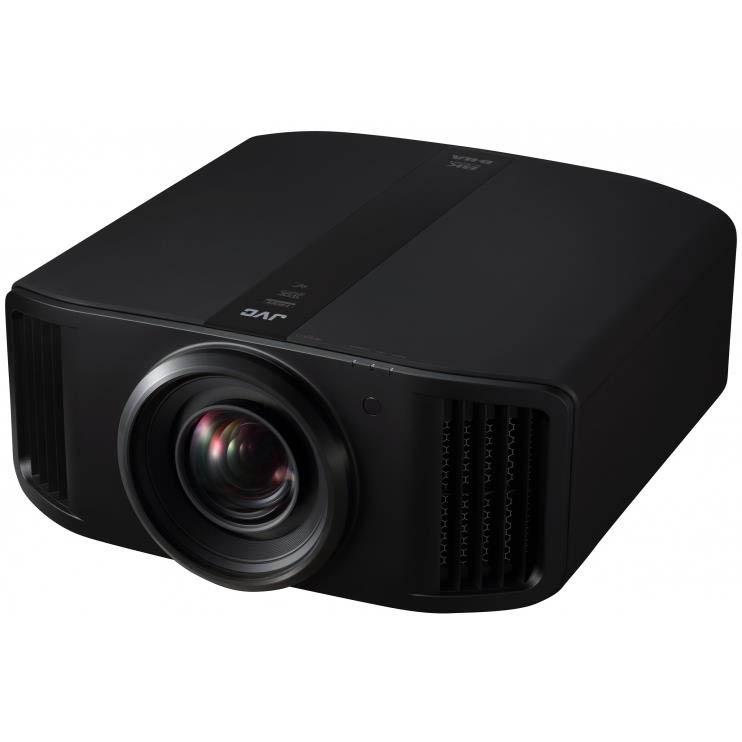
When it comes to high-end home theater, few names carry as much weight as JVC. Today we're comparing two of their flagship projectors: the DLA-NX9 ($17,999) and its successor, the DLA-NZ9 ($24,999). Both represent the pinnacle of home theater technology, but with some crucial differences that matter for potential buyers.
The home theater projector landscape has changed dramatically since the NX9's 2018 release. When it launched, 8K content was barely on the horizon, and 4K gaming at 120Hz wasn't yet possible. The NZ9's 2021 release brought significant technological advances, particularly in light source technology and gaming capabilities.
Perhaps the most significant difference between these projectors is their light source. The DLA-NX9 uses a traditional 265W NSH lamp with about 4,500 hours of life in low mode. While this technology is proven, it comes with familiar drawbacks: brightness gradually dims over time, and lamps eventually need replacement at around $500 each.
The DLA-NZ9 introduces JVC's BLU-Escent laser technology, offering several advantages:
For serious home theater enthusiasts who might use their projector 4+ hours daily, the laser light source alone could justify the price difference over a 5-year period.
Both projectors deliver excellent contrast, but with different approaches:
The NX9 outputs 2,200 lumens with a 100,000:1 native contrast ratio. This was class-leading in 2018 and still impresses today. However, the laser-equipped NZ9 pushes this further with:
In real-world use, this translates to noticeably better performance with HDR content and more flexibility for rooms that aren't completely light-controlled.
While both projectors advertise 8K capabilities, they achieve this differently:
The DLA-NX9 uses e-shift technology to simulate 8K resolution from its native 4K chips. It shifts pixels diagonally to effectively double the resolution in each direction. While effective, it's not true 8K input capability.
The DLA-NZ9 features:
These improvements make the NZ9 more future-proof and versatile, especially for mixed-use scenarios including gaming and sports viewing.
High Dynamic Range content handling has improved significantly between these generations. The NX9's Auto Tone Mapping was groundbreaking in 2018, but the NZ9 takes it further with:
This means more natural-looking HDR content with better preservation of detail in both bright and dark scenes. The laser light source allows for more precise control over brightness levels, resulting in more impactful HDR performance.
Gaming support shows perhaps the starkest contrast between generations:
The NX9 is limited to 4K/60Hz input, which was standard in 2018. The NZ9 supports:
For gamers with current-gen consoles or high-end PCs, these features make the NZ9 significantly more attractive.
Both projectors feature:
The NZ9 adds:
While the DLA-NZ9 costs $7,000 more than the DLA-NX9, the value equation isn't straightforward:
NX9 ownership costs:
NZ9 ownership costs:
Choose the NX9 if:
Choose the NZ9 if:
Both projectors represent excellence in home theater projection, but the NZ9's technological advances and lower long-term maintenance requirements make it the better choice for most serious home theater enthusiasts, despite the higher initial cost. The NX9 remains an excellent projector, but the laser light source, superior HDR handling, and gaming capabilities of the NZ9 make it the more compelling option for those who can afford it.
| JVC DLA-NX9 | JVC DLA-NZ9 |
|---|---|
| Price - Initial Investment | |
| $17,999 | $24,999 |
| Light Source - Affects maintenance costs and longevity | |
| 265W NSH Lamp (4,500 hours life) | BLU-Escent Laser (20,000 hours life) |
| Brightness - Important for HDR performance and ambient light tolerance | |
| 2,200 lumens | 3,000 lumens |
| Contrast Ratio - Critical for black levels and overall image depth | |
| 100,000:1 native, 1,000,000:1 dynamic | 100,000:1 native, ∞:1 dynamic |
| Resolution Support - Determines future-proofing | |
| 4K native with 8K e-shift simulation | True 8K input (8K/60p) support |
| Gaming Features - Essential for next-gen console gaming | |
| 4K/60Hz maximum | 4K/120Hz, VRR, ALLM support |
| HDR Capabilities - Impacts modern content viewing | |
| HDR10, HLG | HDR10+, HLG, Frame Adapt HDR Gen 2 |
| Input Connectivity - Affects compatibility with sources | |
| HDMI 2.0b (18Gbps) | HDMI 2.1 (48Gbps) |
| Lens Specifications - Determines installation flexibility | |
| 100mm all-glass, 18-element | 100mm all-glass, 18-element with improved coatings |
| Operating Noise - Important for quiet scenes | |
| 28dB | 24dB |
| Color Gamut Coverage - Affects color accuracy | |
| Exceeds DCI-P3 | 100% DCI-P3 with improved accuracy |
| Startup Time - Convenience factor | |
| Several minutes warm-up required | Instant on/off |
| Annual Operating Costs - Long-term consideration | |
| Lamp replacement every ~2 years ($500) | No replacement costs |
For heavy users (3+ hours daily) or those wanting future-proof features, yes. The laser light source eliminates lamp replacement costs ($500 every 2 years), and the improved HDR and gaming capabilities justify the premium.
Both projectors work with any high-quality projection screen, but a screen with proper gain and ambient light rejection properties will maximize performance.
We've done our best to create useful and informative comparisons to help you decide what product to buy. Our research uses advanced automated methods to create this comparison and perfection is not possible - please contact us for corrections or questions. These are the sites we've researched in the creation of this article: youtube.com - projectorscreen.com - avsforum.com - crutchfield.com - avnirvana.com - flanners.com - projectorcentral.com - soundandvision.com - jvc.com - eu.jvc.com - directappliance.com - whathifi.com - soundandvision.com - worldwidestereo.com - projectorreviews.com - worldwidestereo.com - us.jvc.com - crutchfield.com - abtvaustin.com - valueelectronics.com - projectorcentral.com